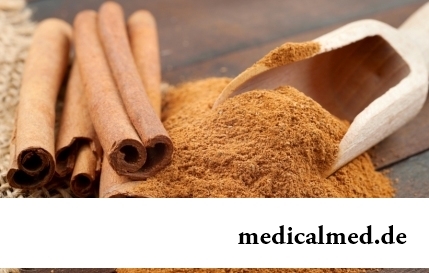





Smoking and alcohol
The nicotine which is contained in tobacco, and alcohol are strong psychoactive agents. Surfactant (psychoactive agents) – any substances and their mixes, both a natural, and artificial origin influencing functioning of the central nervous system owing to what there are changes of a mental condition of the person. Smoking and alcohol along with excess weight are the main reasons for predictable death.

From the chemical and biological point of view nicotine is neurotropic poison, being toxic for nervous cells. Owing to the specifics nervous cells are susceptible to influence of any sort of harmful substances. In classification surfactant nicotine concerns to tertiary group, being on the periphery of depressants and the stimulating substances. Alcohol in the same classification concerns to group of depressants.
Stimulating surfactant – psychotropic substances which activate activity of the person mental and physical (to a lesser extent).
Depressants – any substances making the oppressing impact on TsNS or the oppressing certain aspects of its activity.
The smoking and alcohol combined at the same time supplement each other in the impact on TsNS, strengthening effect.
The mechanism of impact of smoking and alcohol on a human body
Alcohol comes from a stomach to blood within the first two minutes. Blood carries it on all to all organism. Brain cells, first of all big cerebral hemispheres are exposed to the greatest influence. After the first dose of alcohol the brain gives immediate reaction in the form of the deterioration in conditioned-reflex activity which is slowed down formation of difficult movements, lacks of coordination there is a change of a ratio of processes of excitement and braking of TsNS.
Getting to frontal lobes of a cerebral cortex, alcohol liberates emotions of the person that is shown in the form of unjustified joy, causeless laughter, ease of judgments. The amplifying excitement after alcohol intake is followed by weakening of processes of braking in bark of big cerebral hemispheres owing to what control over work of some departments of a brain stops. Bashfulness and restraint is lost. Each next portion of alcohol promotes the increasing paralyzing of the highest nerve centers. Disturbance of activity of a nervous system is observed at any alcohol intake: one-time, incidental, systematic.
Small dose of nicotine which the person receives, smoking one cigarette, promotes short-term increase in excitability of a cerebral cortex then oppression of activity of nervous cells follows. When smoking excitement quickly is replaced by oppression.
Alcohol and tobacco, namely the nicotine which is contained in it make impact on the same nerve centers that strengthens the "exciting" effect. So, the received nicotine dose with the smoked cigarette strengthens effect of intoxication (a lack of coordination of movements, loss of a possibility of full-fledged assessment of a situation).
Smoking and alcohol: main signs of dependence
Smoking and alcohol develop the dependence demanding treatment at the person. Alcohol addiction or alcoholism is characterized by the following symptoms:
- Mental and somatic disorders;
- Regular use of alcoholic and low alcohol beverages;
- Abstinence syndrome in case of the termination of reception of alcoholic drinks;
- Disturbance of brain activity;
- Mental and physical dependence on alcohol.
Nicotine addiction – a type of the drug addiction shown in regular smoking of the nicotinocontaining mixes (generally tobacco), and also in mental and behavioural disorders of the person. The main symptoms of nicotine addiction are:
- Insuperable desire (thirst) for smoking;
- Inability to control the acts;
- Irritability, intolerance, development of stressful states;
- Abstinence syndrome at a long break in the use or cancellation of the nicotinocontaining substances;
- Continuation of the use of the nicotinocontaining substances even at awareness of their negative impact on a human body.
Now the set of techniques of treatment of dependences on alcohol and tobacco practices.
Alcohol and tobacco: whether are so harmful?
Impact of smoking and alcohol on a human body in general and on TsNS in particular is an object of research of psychologists, narcologists, psychiatrists, therapists, pulmonologists and many other specialists. All know of harm of smoking and alcohol also to everyone. Alcoholism and nicotine addiction take the leading positions among the mortality reasons. Nevertheless, alcohol and tobacco (nicotine) are the resolved types surfactant, available to any person who reached an age of majority.
Numerous researches showed that among moderately drinking people (consuming on average 8-12g pure alcohol in day) death rate is 18% lower, than among the teetotal or suffering from alcohol addiction people.
Recent researches also showed that regular consumption of the nicotine stimulating certain sites of a cerebral cortex promotes decrease in risk of development of a number of mental diseases (among which there is Alzheimer's disease, Parkinson's disease).
Nevertheless, the facts of positive impact of smoking and alcohol found by scientists on a human body are not the basis for uncontrolled alcohol intake and tobacco.
In the aspiration to pull out the patient, doctors often go too far. So, for example, a certain Charles Janszen during the period from 1954 to 1994 endured more than 900 operations on removal of new growths.

For many spouses the question of planning of a family is one of the main. The choice problem effect at the same time comes out on top...
Section: Articles about health
Bulimia and anorexia, are heavy deviations of a feeding behavior, become a cause of death of patients much more often than all other nervous breakdowns combined. In 60% of cases two illnesses accompany each other: patients feel horror before danger on...
Section: Articles about health
From sexual contacts each person can test insufficiently strongly expressed sexual desire or lack of satisfaction from time to time. However when it happens regularly, it is an occasion to think about health. Most of people does not hurry to ask similar questions physicians: one consider that they will be able to cope with malfunctions independently, others hesitate to report to strangers about so delicate problems and hope that troubles will stop by itself....
Section: Articles about health
All like to sing. Small children with pleasure are engaged in a vocal, not especially thinking of hit in a melody. Adults most often...
Section: Articles about health
The business lady, the become mother, it is necessary to solve an array of problems. But of them is main: how to combine the beloved child and work? What traps trap the working mother and how she needs to behave?...
Section: Slideshow
Health and attractiveness - eternal values, pursuing which people often use the most unusual ingredients and technicians. Let's consider 11 most exotic and sometimes not most pleasant Spa procedures to which the person in a pursuit of beauty and youth agrees....
Section: Articles about health
Many parents of children at the age of 2-4 years face excessively whimsical behavior of the child. The kid exhausts constant crying...
Section: Slideshow
Ayurveda - the most ancient tselitelsky practice which came to us from India. It represents the doctrine about maintenance of physical, psychological and moral health of the person by means of the complex of procedures including a diet, cleaning of an organism, respiratory упр...
Section: Articles about health
Sometimes it seems that modern society was divided into two camps: representatives of the first are sure that only the woman has to be responsible for contraception, representatives of the second, respectively, are sure that it is destiny of men. Meanwhile the question of contraception has very many aspects – both psychological, and legal and, of course, medical....
Section: Articles about health
Healthy lifestyle today in fashion, and many parents think of that the child from the early childhood played sports. To a Torah...
Section: Articles about health
Long time antibiotics were considered as a panacea from all diseases and were appointed even at insignificant symptoms of an infection. Even now not everyone knows in what force of antibiotics how and when they should be accepted. Let's discredit 7 popular myths about such drugs...
Section: Articles about health
It is difficult to revaluate importance of kidneys for an organism. These bodies not only perform work on purification of blood of decomposition products and removal of excess liquid. They are responsible also for production of some hormones necessary for maintenance of a normality of a bone tissue, and also for a producing red blood cells – erythrocytes....
Section: Articles about health
Statistically, pathologies of a thyroid gland in the world more than 500 million people have. Failures in work of this body conduct to is heavy...
Section: Articles about health
Residents of big cities quite often have a disease which is known as the syndrome of chronic fatigue (SCF) today. This illness affects the people belonging to various social and demographic groups and living on all continents. Most of all SHU to a podverzha...
Section: Articles about health
Run - one of the most available and effective ways to revitalize the organism. Knowing about its extraordinary advantage, each of us at least once tried to make jogs, but only the few made these occupations regular. In spite of the fact that in jogging (easy jogging), apparently, there is nothing difficult, the beginning runners often make mistakes which lead to complete cessation of trainings. Let's consider 10 useful tips for beginners who will allow them to make regular п...
Section: Articles about health
Scientists always aimed to offer fundamental explanations for medical problems. Their theories formed the basis of modern methods is treated...
Section: Articles about health
What woman does not dream of a beautiful and thick hair? While physicians developed difficult schemes on hair transplant, in the industry of hairdresser's art a few years ago there was a sensation – methods of hair extension appeared. It would seem, dreams came true...
Section: Articles about health
Doctors claim that the people not so familiar with a dorsodynia occur among adult Russians very seldom. At the same time the vast majority of the patients who are periodically testing this indisposition do not hurry to ask for medical care at all. On the one hand, there is an opinion that feelings of this sort at mature age are nearly natural phenomenon which is not doing serious harm to health. With another – practice of self-treatment various obezbol is eurysynusic...
Section: Articles about health
For anybody not a secret that the modern person eats not as his ancestors. For the last 100 years in broad access appeared with...
Section: Articles about health
Beauty shop – the place which is associated only with positive emotions: joy, pleasure, relaxation. However visit of salon where work with biological material of clients, not always harmlessly is conducted. Today it is known Bol...
Section: Articles about health
The immunity role in growth of the child is invaluable. The proteins-immunoglobulins produced by immune system preserve the child against the diseases capable − owing to an organism weak still − to serve as a stressful factor, to become the reason of many complications and delays in development of the kid. If the immune system weakened, health of the child is under direct threat and needs active actions for strengthening of protective forces of an organism − preferably non-drug....
Section: Articles about health
Sooner or later hair turn gray at all. Many people try to hide these changes, returning natural color of the hair with the help about...
Section: Articles about health
The metabolism at each person proceeds in own way. However between the speed of this process and disposal of excess weight after all all have a dependence. Unfortunately, the people inclined to try on itself numerous "miracle" diets, not always at...
Section: Articles about health
Dark circles (bruises) under eyes – a shortcoming with most of which often fight against the help of cosmetics (proofreaders, saloon procedures and so forth), eliminating only its visibility. However, according to doctors, skin around eyes – the indicator of many disturbances in an organism. To reveal them at early stages, without having disguised bruise, and having addressed its reasons – a task of each person who is regularly finding under with own eyes dark stains. Early detection and elimination of the disease lying in wasps...
Section: Articles about health
Eyes – unique body on the structure thanks to which the person obtains about 80% of information on the world around: about a form...
Section: Articles about health
Each person knows that fervescence is an illness sign. However too low temperature (hypothermia), especially also can demonstrate existence of diseases when it is observed long enough. Such state is dangerous those...
Section: Articles about health
Neurosis is called pathology of a nervous system at which deviations in functioning of the highest nervous processes are observed. Most often - owing to yet not strengthened mentality - children are subject to neurosises. The unhealthy, hostile atmosphere in collective, a family, the strong and sharp shock, and also a set of other factors which negatively influence the little person who did not learn to overcome stresses yet can become premises to emergence of such disturbances....
Section: Articles about health
